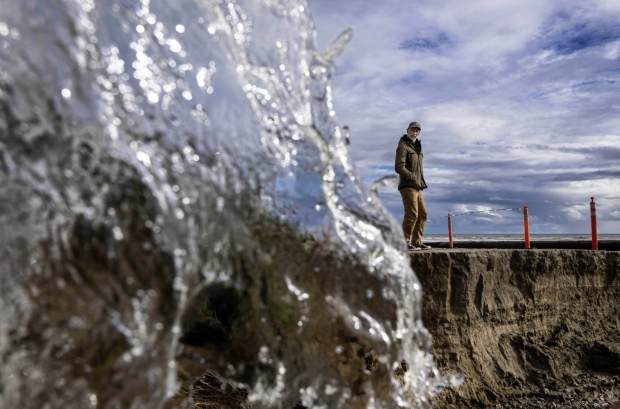
Gary Headrick walked the soggy sea wall between the nuclear plant and the roiling ocean at king tide. Wild waves crashed just yards from where millions of pounds of nuclear waste sat, encased in steel and concrete. It felt scary.
As sinkholes appear in the road to the beach near the shuttered San Onofre Nuclear Generating Station, Headrick and many others say the radioactive detritus must move to higher ground as quickly as possible. But evidence shows that’s not necessary just yet, said Southern California Edison, which oversees the plant’s tear-down.
Edison presented its state-mandated study of sea level rise near the plant on March 7 — 238 pages chock full of pictures and measurements and graphs and projections — concluding that, “as designed and with minimum regular maintenance,” the rocks, sea wall and retaining wall between the waste storage area and the ocean will be just fine through at least 2050, and likely well beyond.
Another worry of critics — that groundwater will eventually rise higher than the concrete floor of the dry storage system, soaking into the concrete and perhaps corroding the steel canisters encasing the waste — is not a realistic threat either, the study concludes.

SONGS reactors 1, 2 and 3 were built dozens of feet below sea level, said Ron Pontes, Edison’s decommissioning manager for San Onofre, at the online Community Engagement Panel meeting Thursday. “Even then, we never saw evidence of water infusion.”
Below-sea-level structures have been demolished over recent years, and were “bone dry,” Pontes said.
So a rising sea should pose no threat to the integrity of the systems protecting 3.6 million pounds of spent nuclear fuel for many decades, even if there’s flooding. And officials hope the federal government — which is contractually obligated to dispose of commercial nuclear waste, but hasn’t, which is why it has piled up at San Onofre and other nuclear plants nationwide — will find a…
Read the full article here






